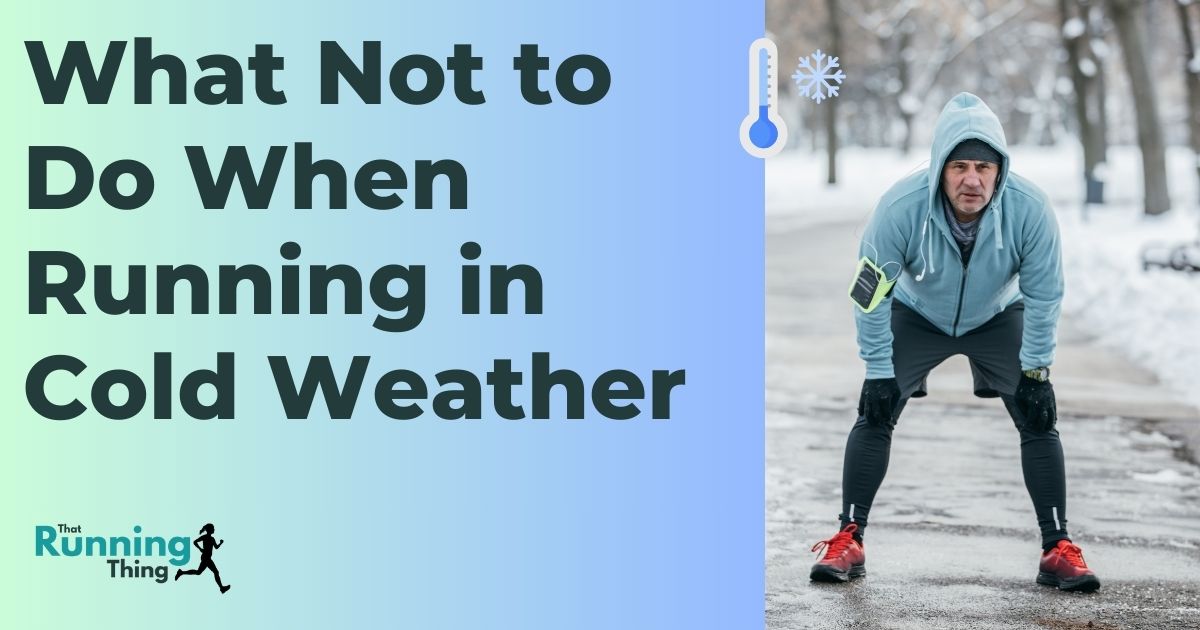1. Understanding the Risks of Cold-Weather Running
When we go for a run in cold weather, we expose ourselves to certain risks that we may not be aware of. Here are some of the risks that we should be aware of when running in cold weather:
Hypothermia
Hypothermia is a condition that occurs when our body temperature drops below normal. When we run in cold weather, we are at risk of developing hypothermia, especially if we are not properly dressed. Symptoms of hypothermia include shivering, confusion, and slurred speech. If we suspect that we or someone we are running with is experiencing hypothermia, we should seek medical attention immediately.
Frostbite
Frostbite is a condition that occurs when our skin and underlying tissues freeze. When we run in cold weather, we are at risk of developing frostbite, especially if we are not properly dressed. Symptoms of frostbite include numbness, tingling, and a burning sensation in the affected area. If we suspect that we or someone we are running with is experiencing frostbite, we should seek medical attention immediately.
Increased Risk of Injury
When we run in cold weather, our muscles and joints are stiffer than they would be in warmer weather. This increases our risk of injury, especially if we do not properly warm up before running. To reduce our risk of injury, we should take the time to properly warm up before running and wear appropriate footwear.
By understanding the risks of cold-weather running, we can take steps to reduce our risk of injury and stay safe while enjoying our run.
2. Dress for Cold Conditions
When running in cold weather, it’s important to dress appropriately to ensure that we stay warm and comfortable. Here are some guidelines to follow when choosing our running attire.
Avoiding Overdressing
While it may be tempting to layer up excessively to keep warm, overdressing can actually lead to discomfort and even overheating. We recommend wearing a base layer made of moisture-wicking material, followed by a mid-layer for insulation, and a lightweight outer layer for wind and water resistance.
Steering Clear of Cotton
Cotton may be a comfortable fabric, but it’s not ideal for cold weather running. When cotton gets wet, it stays wet, which can lead to chills and discomfort. Instead, we recommend choosing materials such as wool or synthetic fabrics that wick away moisture and keep us dry.
In addition to choosing the right fabrics, we should also pay attention to accessories such as hats, gloves, and socks. These items can make a big difference in keeping us warm and comfortable during our runs.
By following these guidelines, we can ensure that we’re dressed appropriately for cold weather running, allowing us to stay comfortable and focus on our workout.
3. Bad Pre-Run Preparation
Before heading out for a run in cold weather, it’s important to prepare properly. Here are a few things we should avoid doing during our pre-run preparation:
Skipping Proper Warm-Up
When it’s cold outside, we may be tempted to skip our warm-up and jump straight into our run. However, this can put us at risk of injury. It’s important to take the time to warm up properly, even if it means spending a few extra minutes indoors. A good warm-up should include dynamic stretching, such as leg swings and lunges, to get our muscles ready for the workout ahead.
Neglecting Weather Checks
It’s important to check the weather before heading out for a run in cold conditions. We should be aware of the temperature, wind chill, and any precipitation that may be present. This will help us to dress appropriately and avoid any potential dangers. For example, if the temperature is below freezing, we may need to wear multiple layers and cover our extremities to prevent frostbite.
By taking the time to properly prepare for our cold weather runs, we can reduce our risk of injury and stay safe and comfortable throughout our workout.
4. During the Run
When running in cold weather, it’s important to pay attention to your body’s signals and stay hydrated. Here are some things to keep in mind during your run:
Ignoring Your Body’s Signals
It’s easy to get caught up in the moment and push ourselves too hard, but it’s important to listen to our bodies. If you start to feel dizzy, lightheaded, or experience any other unusual symptoms, it’s time to slow down or stop. Ignoring these warning signs can lead to serious health problems.
Forgetting to Stay Hydrated
Just because it’s cold outside doesn’t mean you don’t need to stay hydrated. In fact, the dry winter air can actually dehydrate you faster than you might think. Make sure to bring water or a sports drink with you on your run, and take sips regularly to keep your body hydrated.
To summarise, during your run in cold weather, it’s important to pay attention to your body’s signals and stay hydrated. By doing so, you can help prevent injury and ensure a safe and enjoyable run.
5. Post-Run Practices
After a cold weather run, it’s important to take care of our bodies to prevent injury and promote recovery. Here are a few post-run practices we should avoid:
Neglecting Cool-Down
Skipping a cool-down after a run can lead to soreness and stiffness. We should spend at least 5 to 10 minutes walking or jogging at a slower pace to gradually decrease our heart rate and allow our muscles to relax. Stretching is also important to prevent tightness and improve flexibility. We should focus on stretching the major muscle groups used during our run, holding each stretch for 15 to 30 seconds without bouncing.
Overlooking Post-Run Nutrition
After a run, our bodies need to replenish the nutrients lost during exercise. We should aim to eat a balanced meal within 30 minutes of finishing our run, including carbohydrates to replenish glycogen stores, protein to repair and rebuild muscle tissue, and healthy fats to reduce inflammation. We should also drink plenty of water to rehydrate and replace fluids lost through sweat.
Neglecting cool-down and overlooking post-run nutrition can hinder our progress and increase the risk of injury. By taking care of our bodies after a cold weather run, we can improve our performance and overall health.


